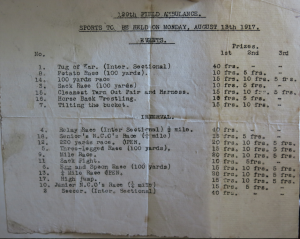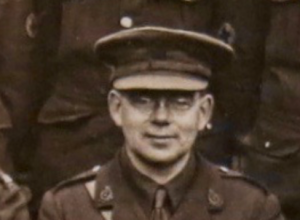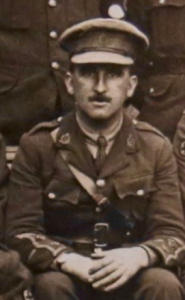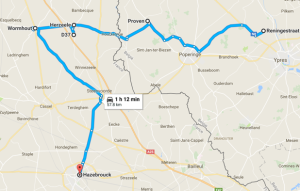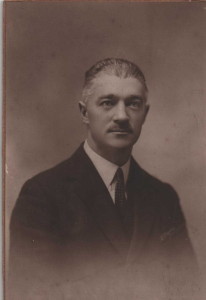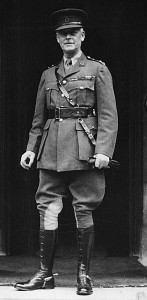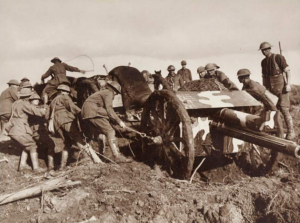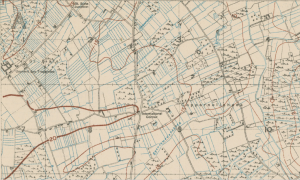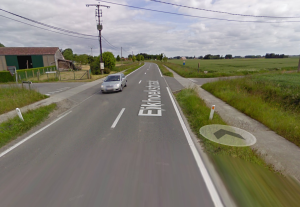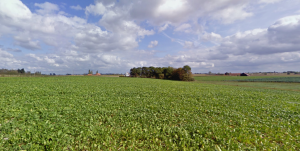13th August 1917 Monday
All material produced or reproduced here and throughout this work is the sole copyright of the author and the family of Doctor D.C.M. Page MC.
An old school pal visits and a fun day with the 129th Field Ambulance
“My school-mate – James Dandie – paid me a surprise visit on the 13th. He had ridden all the way from Zillebeeke, and was looking very fit.”
A bit of an aside to the diary but I couldn’t resist
It wasn’t all terror and tragedy at the front, occasionally some light relief was organised behind the lines. Not quite as far behind as Douglas Haig and his staff though.
We mentioned old pal James Dandie when they met up last year. http://whiz-bangskrumpsandcoalboxes.co.uk/2016/07/18/18th-july-1916-tuesday/
I wonder if Jim entered the sports day?
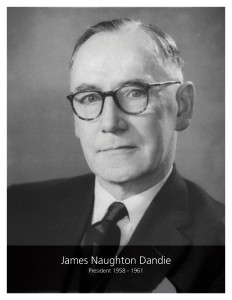
James Naughton Dandie went on to become President of The Law Society of Scotland. Photo courtesy of The Law Society of Scotland
Find out about our connection with Dr Page and an introduction to his diary here
11th August 1917 Saturday
All material produced or reproduced here and throughout this work is the sole copyright of the author and the family of Doctor D.C.M. Page MC.
Percy makes sure of an uncomfortable tour with the Colonel.
“Then on the 11th August the Colonel and I went for a tour of inspection ‘up the line’ via Proven, Poperinghe, Elverdinghe and Brielen. As we were going along the Switch Road a big ‘Perishing Percy’ shell dropped in front of us at the side of the road. Then as soon as we reached the canal bank the Huns started shelling it between Sussex and Fusilier blowing up one dug-out. We walked up Bard’s Causeway towards Pilckem. When we got to the cross-roads a huge ‘coal-box’ shell dropped in amongst a working party of about 200 men of the 29th Division, wounding several of them. Pieces of shell, and clods of earth fell all around us, but we weren’t injured. We helped to rescue the wounded, and then decided to get back to a quieter spot, as the enemy shelling was getting very unhealthy.”
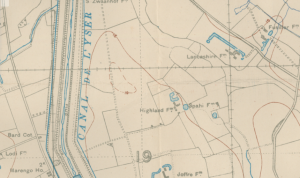
Bard’s Causeway was a bridge close to Bards Cottage (bottom left) Fusilier Farm (top right). Reproduced with the permission of the National Library of Scotland. https://maps.nls.uk/index.html
Find out about our connection with Dr Page and an introduction to his diary here
8th August 1917 Wednesday
All material produced or reproduced here and throughout this work is the sole copyright of the author and the family of Doctor D.C.M. Page MC.
Two Officers Go For a Joyride
“On the 8th August, Capt. Burke and I went for a joy-ride in a motor ambulance to Hazebroucke via Proven, Herzeele, Wormhendt and Steenoorde. At Hazebroucke we bought mess stores, and had a ‘bon’ dinner on the way back at Wormhendt.”
As consistently found throughout the diary a couple of typing errors bely the true names of towns. Even allowing for older versions of town names, some are just wrong, however we do provide educated guesses as to the correct places.
Find out about our connection with Dr Page and an introduction to his diary here
4th August 1917 Saturday
All material produced or reproduced here and throughout this work is the sole copyright of the author and the family of Doctor D.C.M. Page MC.
No prizes for guessing the weather forecast.
“More rain on the 4th August, and very cold. We moved back during the day to a camp in a wood near Chateau Lowrie. I was sent on in advance to take over from the 61st Field Ambulance. There I met Quinn, the Irish Rugby Internationalist, and Jones the Welsh Internationalist. Here we remained at rest until 18th August. Of course we had to carry on our usual work of collecting sick, and attending to them in our hospital – a marquee – but we had any amount of spare time, and most of us spent it in sleeping – at least during the day we did, for at night sleep was impossible owing to the enemy bombing raids, and the attentions of “Perishing Percy” the high velocity gun.”
The Irish rugby player was Joseph Patrick Quinn born November 23rd 1888 who played wing for Ireland up to the outbreak of war in 1914. He scored a try in the 6-0 victory over Scotland at Landsdowne Rd, Dublin in 1914 and also scored a try against France in Paris 1914 as Ireland beat France 8-6. Both Quinn and Jones played in the Five Nations Championship of 1914, with Quinn who played wing scoring tries against Scotland and France. Hardly surprisingly there were two Jones’s playing for Wales but the favourite candidate would be John “Jack” Jones who was part of the “Terrible Eight” a physically hard group that played Ireland (Quinn was not involved) in Belfast. It is regarded as the most violent ever of all rugby internationals. Percy Jones would be the other candidate, but as yet neither of their war records has come to light.
The mention of “Perishing Percy” the high velocity gun is of particular interest. The Germans introduced a high velocity gun in 1918 known as the Paris Gun, but my research so far has failed to unearth one in use in August 1917. This will be updated as and when.
Find out about our connection with Dr Page and an introduction to his diary here
3rd August 1917 Friday
All material produced or reproduced here and throughout this work is the sole copyright of the author and the family of Doctor D.C.M. Page MC.
Rain, rain and more rain
130th (St John) Field Ambulance had borrowed a horse drawn ambulance wagon from the 131st Field Ambulance and while transporting bedding etc., on the way to Mordacq Farm by White Hope Corner a shell hit the wagon. Luckily no one was killed.
“On August 3rd, it rained all day, and was cold and windy. We had lots of sick and wounded to attend to all day. It was pitiful to see the walking wounded coming down the road soaked to the skin, coated with mud, and utterly exhausted. We were happily able to cheer them up a bit with hot cocoa, cigarettes, fresh dressings to their wounds, and a cheery word as we sent them off in the ambulance cars. At White Hope Corner the Huns dropped a shell on to one of our ambulances. It was coming up with dry clothes for the wounded. We managed to salve a good deal of the clothing.”
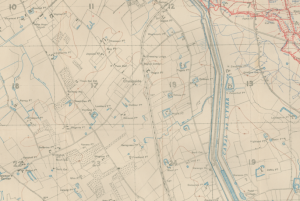
White Hope Corner top left in square 10. Reproduced with the permission of the National Library of Scotland. https://maps.nls.uk/index.html
Find out about our connection with Dr Page and an introduction to his diary here
2nd August 1917 Thursday
All material produced or reproduced here and throughout this work is the sole copyright of the author and the family of Doctor D.C.M. Page MC.
Ceaseless Rain and Sore Feet
“August 2nd was another day of heavy rain. Our attack was completely held up. Our guns were busy all day, and the Germans put a lot of heavy stuff over near us – Mordacq Farm and H.Q. Corner. I helped at Robecq Loading Post all day, and also went down to the ‘Cage’ to attend a few sick and wounded Huns. My feet were painful and swollen owing to being unable to get my boots off for several days.”
The rain continued during what was to be the worst rainfall in Flanders for thirty years. Haig had written the previous day that in a way he was pleased that his troops had not advanced further, the rain had prevented the roads and supply railways from following the advance. This would have meant his guns would be running short of ammunition allowing a counter attack.
Plenty of activity down at Mordacq farm today. The Assistant Director Medical Services ADMS visited and arranged to establish a Field Ambulance there. More tents had been provided and 2 ambulance wagons were assigned there.
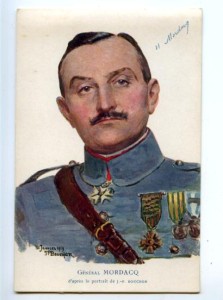
General Mordacq of France, the man who gave his name to the Farm area. By Thirdeyedpyramid – Own work, CC BY-SA 3.0, https://commons.wikimedia.org/w/index.php?curid=19465144
Find out about our connection with Dr Page and an introduction to his diary here
1st August 1917 Wednesday
All material produced or reproduced here and throughout this work is the sole copyright of the author and the family of Doctor D.C.M. Page MC.
The rain interferes with progress
“Next day, August 1st, was very wet, and the wretched wounded were coming down soaked to the skin and covered with mud from head to foot. The attack was held up. As I had only seven wounded Germans to attend to during the day, I was able to help in attending to our own wounded at Mordacq Collecting Post. Our men in the line were having a bad time with the rain and mud, and enemy shelling. The Germans attacked during the afternoon, and gained 100 yards, but we got it back again later. The guards on our left were relieved during the day. The roads were in a terrible state – wagons, guns, motor lorries, and caterpillars were slipping into ditches.”
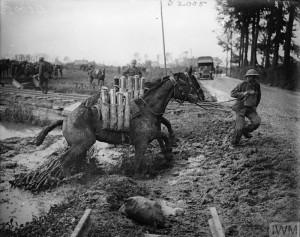
Near Ypres 1st August 1917 carrying shells a horse is dragged out of the mud. To the left a Decauville railway and in the foreground the remains of a standard gauge line.
Copyright: © IWM. Original Source: http://www.iwm.org.uk/collections/item/object/205194794
Mordacq Collecting Post was one of many places named by the British as they mapped the area. Contemporary maps show places with many imaginative names after places at home, but also characters like in this case. Colonel Mordacq was the Commanding Officer of the French 90th Brigade (45th Algerian Division) that were based nearby in 1915. (See the map below). Other places nearby were Joffre Farm. Lancashire Farm, Fusilier Farm, Signal Cottages, Crossing Lodge and Cheapside. Clearly names not easily tripping off the tongues of the local Belgians.
Mordacq Farm is near the bottom of square 17. That is where the Mordacq Loading Post would have been.
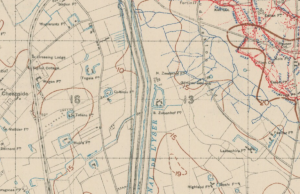
Mordacq’s Camp at the 2nd Battle of Ypres was at Zwaanhof Farm just to the right of centre on the map above. Reproduced with the permission of the National Library of Scotland. https://maps.nls.uk/index.html
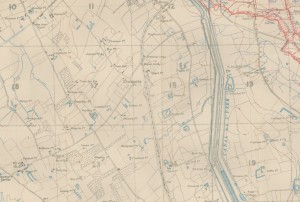
Mordacq Loading Post was at Mordacq Farm located on the map just below the 17 square. Reproduced with the permission of the National Library of Scotland. https://maps.nls.uk/index.html
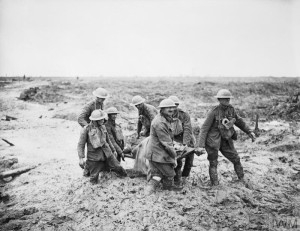
Stretcher bearers at Boesinghe a short way north of Ypres, to the west of the canal on the 1st August 1917. Copyright: © IWM. Original Source: http://www.iwm.org.uk/collections/item/object/205193365
Find out about our connection with Dr Page and an introduction to his diary here
31st July 1917 Tuesday
All material produced or reproduced here and throughout this work is the sole copyright of the author and the family of Doctor D.C.M. Page MC.
The Third Battle of Ypres (now they call it Passchendaele)
The Great Day had arrived
Once more after months of planning and following on from the disappointment of the Somme, General Douglas Haig was to commence with his next “Big Push”. The objective was to clear the Germans from the salient that had been created east of the town of Ypres, resulting in a long stalemate and to push on through to the German submarine bases on the coast of Belgium.
Months of planning had taken place. Political wrangling in Westminster questioned whether it should take place or not, but now Haig had his way and battle was to commence.
“Tuesday, July 31st, was the ‘Great Day’. At 3.40 a.m. a terrific bombardment began. Every British, French and Belgian gun from the coast to Messines went full blaze. The din was terrific, and the Bosche line was a sight worth seeing. It was a mass of flame. I stood outside a dug-out near the canal bank and watched the hellish performance. As dawn broke one couldn’t see the Pilckem Ridge for smoke. The ground trembled, and the air was filled with the shrieking and swishing of shells as they rushed along to deal death and destruction to the enemy.
I was detailed to report for duty to the A.P.M. at the prisoners of war cage at McMahon Farm. Here I was to attend to German wounded. Soon they came rolling in. During the day the 38th Division took about 800 prisoners, and about 300 of them were wounded, some pretty badly.
The division did well taking the whole of Pilckem Ridge, and getting to within a few hundred yards of Langemarcke. Three counter-attacks were easily repulsed. Many Germans were killed, and all the prisoners looked very much exhausted and terrified by our terrific shell-fire. They had been unable to get food or reliefs for five days owing to our continuous bombardment. They were all from the Prussian Guards, and were a fine lot of men. Our Division had a large number of casualties, but not so many as had been expected. The 17th R.W.F. suffered most, all the officers being either killed or wounded. Our guns all moved forward during the day, and everybody was in good spirits. I slept in a small dug-out near the ‘cage’ that night.”
Haig was buoyed by news of early successes. General Gough had told him they had taken as many as 5000 prisoners, but others put it as low as 3000. Nevertheless he saw it as a great achievement. Colonel Eugene “Micky” Ryan was the Chief Medical Officer at GHQ and as such Douglas’s ultimate boss. Ryan was one of the few men to have the complete confidence of Haig and was able to talk to Haig in a totally frank manner. Such was their respect for each other, they remained friends until Haig’s death. He reported around 6000 wounded, mainly from shellfire, had been treated in the ten hours up to 6pm. Haig wrote what now seems hard to equate, “Wounded very cheery indeed”. Maybe thankful that they were still alive and hoping their war was over.
Find out about our connection with Dr Page and an introduction to his diary here
29th July 1917 Sunday
All material produced or reproduced here and throughout this work is the sole copyright of the author and the family of Doctor D.C.M. Page MC.
For quite a while Douglas and his colleagues had been kicking the dust around in the area north west of Poperinghe due to the prolonged summer weather. All was about to change now, preparations for the large-scale battle that was nearing its start had been dominating the area for some time. Although activity including much artillery action had continued unabated, the big one was almost ready. Haig and his chiefs of staff were confident that the intense training and meticulous preparations would soon pay off. The Generals hoped the lessons from last year on the Somme had been learned and mistakes could be rectified. Just like at the Somme though, the Allies failed to use surprise as cover for the attack. An artillery bombardment that lasted two weeks this time, came from 3000 guns, depositing four and and a half million shells and acting as a calling card. They failed to dislodge the Germans from their heavily fortified positions. Germany knew and expected the offensive to begin quite soon.
Suddenly however, the weather turned. Just like now in 2017 the hot sunshine turned to heavy downpours and in a short period of time the countryside already smashed up with little effective drainage, turned into a quagmire.
“Then the rain came on on Sunday 29th. Soon all the roads and tracks were in a terrible state of mud, and several wagons got stuck, and had to be abandoned, or pulled out with extra horses and men.”
Find out about our connection with Dr Page and an introduction to his diary here
27th July 1917 Friday
All material produced or reproduced here and throughout this work is the sole copyright of the author and the family of Doctor D.C.M. Page MC.
Having spent time around Proven and then on to Saint-Sixte which is the location of a Trappist beer producing abbey, Douglas and his men move on to the camp at St. Sixte and then on to Capernoll Farm.
Look on the British trench map dated 30th June 1917. In the top left corner you can see St. Sixte and towards the middle International Corner. To the right of that lies Coppernollehoek (Coppernoll Corner or Copernoll Farm)?
Four days to go to the Big Push and Douglas is describing much fighting in the area already. German bombers lighting up the sky with flares and flarebombs
“On Friday, July 27th, we moved forward to Capernoll Farm, where we were accommodated in tents. That night a large number of Hun planes crossed our lines and dropped huge bombs all round us. They dropped lights which lit up the whole countryside. The noise was terrific. Our searchlights and anti-aircraft guns got busy. We got badly scared, and spent most of the night lying in a ditch. In the early morning our guns bombarded the enemy lines with terrific intensity.
We heard that the enemy had retired behind his third line beyond Pilckem, and that our 15th Welsh Regiment had been badly cut up by shell fire in the Hun third line. The Guards Division on our left had also gone forward, but had had to come back as their right flank was in the air.”
Find out about our connection with Dr Page and an introduction to his diary here
